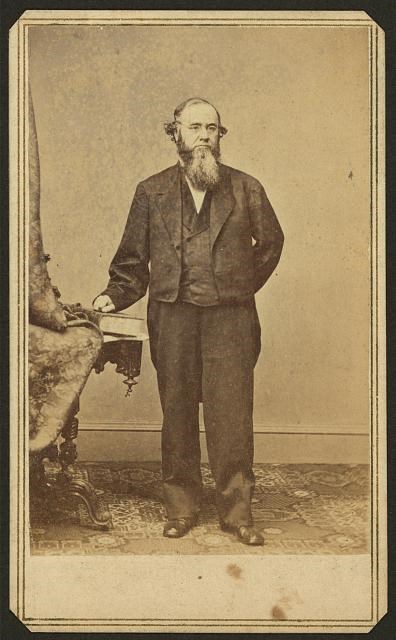Last updated: August 1, 2022
Article
Ulysses S. Grant is Appointed Secretary of War Ad Interim

Library of Congress
Despite Grant and Johnson’s early relationship, Johnson’s attempt to use Grant during his battles with Congress with Reconstruction policy eventually caused Grant to break with Johnson completely. Grant sought reconciliation between the North and the South but not at the expense of Civil Rights for African Americans as Johnson was willing to do. Throughout 1866 -1867 Congress passed legislation over President Johnson’s veto dealing mainly with civil rights and the post war administration of the former Confederate states. This pitted a direct conflict between the President and Congress which forced General-In-Chief Grant into the fray.
During Johnson’s battles with Congress over Reconstruction policy, Johnson forced Grant into the political fray against Grant’s wishes when Johnson brought him along on his infamous “Swing Around the Circle” tour. President Johnson brought Grant along because he wanted to portray him as a supporter of his policies and his opposition to civil rights. With the tour taking place before the 1866 midterm elections, Johnson tried to use Grant to boost his own political fortunes. Instead, Grant became tired of Johnson’s speeches and disgusted with the president’s behavior. He confided to his wife Julia, “I have never been so tired of anything before as I have been with the political stump speeches of Mr. Johnson. I look upon them as a National disgrace.” He actually left Johnson’s entourage claiming illness and returned to Washington early. Publicly he tried to stay above the fray, but privately he wrote to Congressman Elihu Washburne regarding Johnson’s vetoes, “Reconstruction measures have passed both houses of Congress over one of the most ridiculous veto messages that ever emanated from any President.” Grant was clearly not In Johnson’s camp.
During his fray with Congress, Johnson wished to purge Edwin Stanton from his position as Secretary of War. He felt that Stanton was too sympathetic to Congress’s policies. To protect people like Stanton, Congress passed (over Johnson’s veto) the Tenure of Office Act, which limited Johnson’s power to remove certain officeholders without the approval of the Senate. Johnson decided to test the act by removing Stanton and appointing Grant in his place until he could find a permanent replacement. On August 12, 1867, Grant wrote Stanton, “I have the honor to transmit to you a copy of a letter just received from the President of the United States notifying me of my assignment as Act Sec. of War and directing me to assume those duties at once.” From August 12, 1867, Through January 14, 1868, Grant had dual roles, Secretary of War Ad Interim (temporary) and General in Chief of the armies of the United States.
Once Grant accepted the position of Secretary of War Ad Interim (temporary) he was thrust headlong into the battles between the President and Congress. The Senate did not approve Johnson’s removal of Stanton and ordered his reinstatement on January 13, 1868. Johnson intended to use this as a test case to fight the constitutionality of the Tenure of Office Act. This put Grant in a difficult decision, either to defy President Johnson and surrender the War Department or defy the Senate, retain the position and risk fine and/or imprisonment for violating provisions of the Tenure of Office Act.
In the end, Grant decided to surrender his keys to the war department office and the keys were returned to Stanton. This infuriated Johnson, who thought Grant acted in bad faith in not notifying him before-hand of his decision. For his part Johnson realized that he could not rely on Grant with his battles against Congress. The break between Johnson and Grant was complete. Both Democrats and Republicans were feeling Grant out on his interest in a possible presidential run for their respective parties. It was clear Grant did not support Johnson’s polices, especially those that limited freedom and civil rights for African Americans and contributed to violence and instability in the South. Grant broke with Johnson publicly and swung into the Republican orbit. He accepted the nomination of the Republican Party in 1868 to run for President of the United States.
